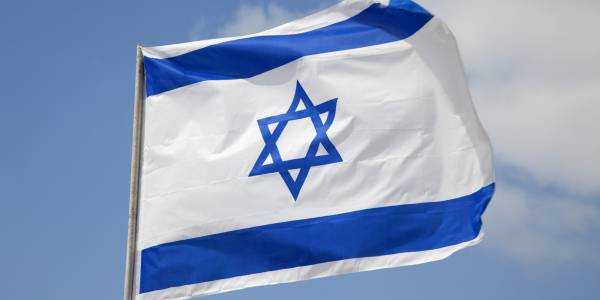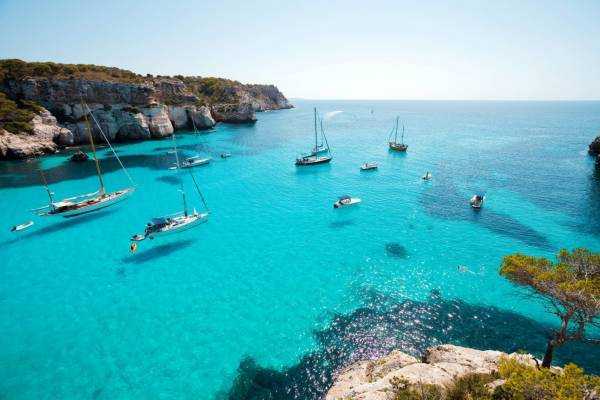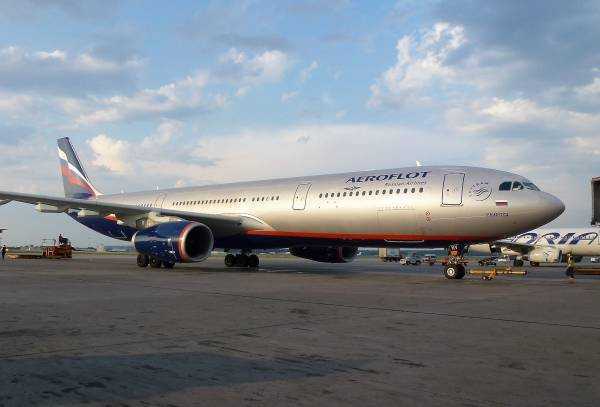
Growth of outbound tourism
Outbound tourism statistics pleased tour operators and other service providers in this area throughout the year. The outbound tourist flow increased in three quarters of the year compiled more than 20%, in total Russians made about 31 million trips abroad.
The tourist flow has grown in almost all popular destinations for foreign holidays, with the exception of Bulgaria and Tunisia. But this growth was achieved to the greatest extent due to the opening of Turkey, which in 2017 again became the most popular destination for outbound tourism.
Stagnation of domestic tourism
The growth of the outbound tourism market has partly caused the stagnation of domestic tourism. Even in Sochi, the most popular Russian resort, tourist activity has slightly decreased in the summer of 2017 compared to the previous summer season. As stated The city's mayor, Alexander Pakhomov, managed to maintain the tourist flow only due to major sporting and other events. In Crimea, the decrease in tourist flow was almost 4%.
One of the important reasons for the decline in popularity of Russian resorts, according to tour operators, was the cold weather - the beginning of summer on the Black Sea coast was uniquely cold and rainy. In addition, the rapid growth in the number of tourists in the three previous years had an effect. In 2014, the domestic tourist flow grew by 30%, in 2015 - by 18%, in 2016 - by another 10%.
As the head of Rostourism Oleg Safonov stated, in some destinations the tourist flow in 2017 increased by 5-10%. First of all, this is Moscow, which received 21 million tourists in a year, 2 million more than the year before.
Turkish boom
Turkey received a record number of Russian tourists in 2017, surpassing the best result so far in 2014. According to Turkish statistics, 4.65 million Russians visited the country in 11 months. In 2016, only 866 thousand Russian tourists visited Turkey, since sales of tour packages to the country were banned until August 28, and charter flights were not operated.
The success of the destination was not hampered by the Coxsackie virus, which collapsed sales in August, or the suspension of VIM-Avia flights, due to which thousands of tourists were stuck in Antalya at the end of September, and other thousands - in Russian airports waiting for a flight on holiday. "Turkey still cannot be beaten in terms of infrastructure, entertainment, capacity of the hotel market, length of the season and other advantages. 2016 clearly demonstrated this," says Irina Tyurina, press secretary of the Russian Union of Travel Industry (RUTI).
Departure of VIM-Avia
VIM-Avia, the largest player in the tourist charter market, stopped operating flights on September 25 due to a lack of funds for operational activities and numerous debts to airports and other service providers. At that time, almost 200 thousand passengers had purchased tickets from the carrier, and almost 40 thousand tourists ended up abroad. Returning these people to Russia and sending tourists on vacation with VIM-Avia tickets turned out to be a serious problem for tour operators.
It was difficult for travel companies to find available planes to organize flights at short notice; they had to accommodate clients in hotels at their own expense while they waited for return flights from abroad, and offer alternative options to those who were supposed to fly on vacation. According to estimates by the Association of Tour Operators of Russia (ATOR), the total losses of tour operators, who first transferred deposits to VIM-Avia for the implementation of flight programs, and then paid a second time for the implementation of the same flights to other airlines, as well as for the accommodation of tourists in hotels, reached almost a billion rubles.
After solving the problems with passenger evacuation, the market faced a shortage of aircraft for transportation to resorts, since VIM-Avia carried out a significant share of tourist transportation. In the winter season, as experts believe, this did not become a problem due to the small flow of tourists, but in the summer, when Russians fly en masse on vacation, it may become a serious headache.
Tightening of charter rules
One of the consequences of the collapse of VIM-Avia was the creation by Rosaviatsia of new regulations for charter flights, which came into force on December 4. Now a request for permission to operate three or more return flights must be submitted no later than two weeks before the start of flights (before December 4, as a rule, the final slot at the airport can be approved one day before departure). However, a request for one-way flights will not be considered.
The departure time for which permission has been received is considered final. If the airline (not due to force majeure) changes the departure time, this is considered a flight delay. The delay threshold for charters has been reduced to 10%, the number of delays will be counted monthly. Based on the results of the calculation, the carrier may be denied permission for subsequent charter flights.
The new regulations also contain other requirements: "the reserve aircraft specified in the request for the performance of specific charter programs must be of comparable capacity. The serviceability level by aircraft type must not be less than 75%. The size of the reserve aircraft must be at least 1 aircraft when using up to 10 aircraft and at least 10% of the carrying capacity." The deadlines for filing applications for one-time permits to change the flight number, change the date and time of departure, and change the departure airport have also been tightened.
Taking into account the new regulations, charter programs for the New Year holidays of several airlines were reduced. Tour operators stated that these reductions will not affect tourists, since the programs were drawn up taking into account the new requirements. Rosaviatsia believes that the new rules will reduce the number of charter flight delays and, in general, will increase the responsibility of air carriers to tourist passengers.
Coxsackie virus in Turkey
First reports of tourists infected with Coxsackie virus in Turkish hotels appeared in early August. Coxsackie is a highly contagious enterovirus transmitted by water, contact-household and airborne droplets. The incubation period lasts several days. Then the temperature rises to 39-40 °C, repeated vomiting, diarrhea, rash on the arms, legs, chest and face, headache and weakness are possible. Most often, the virus is contracted by children under 10 years of age.
Following reports of infections, Rospotrebnadzor sent an official request to Turkish health authorities about the number of cases, locations of spread and measures taken. After which it disseminated information that the situation at the resorts was stable, there were no complications in the epidemiological situation, and the hotline received only five reports of cases of infection.
However, just three days later the department stated, that the situation at Turkish resorts in the Antalya region is unsafe for Russian tourists. And the media began to report on a mass exodus of Russian tourists from Turkey. However, tour operators stated that this was not true. Insurance companies also claimed that the number of tourists who fell ill with Coxsackie did not exceed the usual number for this time of year. Following the results of the summer season, the Russian Foreign Ministry stated that the number of Russians who fell ill with Coxsackie in Turkey was 59 people.
The Russian tourism industry suffered major losses due to a decrease in demand for tours to Turkey after numerous media reports about the virus at resorts. According to the Association of Tour Operators of Russia, the overall decrease in sales in August was 15%. Some clients tried to cancel already purchased tours, but also about 15% of those who were interested in this opportunity canceled.
Preparing for the World Cup
For the Russian hospitality industry, 2017 was marked by preparations for the FIFA World Cup, which will be held in 11 Russian cities from June 14 to July 15, 2018. How they think According to Rostourism, about a million foreign fans and accompanying persons will come to the championship, bringing $1.5-2 billion to Russia.
In the cities where the matches will take place, construction of stadiums, hotels and other infrastructure designed to accommodate fans is being completed. In addition, tourist programs for Russian and foreign guests are being developed.
According to experts, the World Cup will be the most important event for the development of tourism in Russia and attracting foreign tourists to the country. "It is impossible to come up with a better presentation of the country as a tourist destination. This will be a reserve for many years, and for several years to come it will influence the development of the market," says RST President Sergei Shpilko.
Problems with US visas
As a sanction against the United States, the Russian government in July demanded that the staff of all diplomatic missions in Russia be reduced by 70%, to 455 employees, by September 1. The U.S. Embassy in Russia later announced that due to the staff reduction, the procedure for issuing nonimmigrant visas throughout Russia would be suspended and previously scheduled interviews would be canceled, starting August 23, 2017.
Following this decision by the embassy, the terms for issuing American visas in Russia increased up to six months. Russians went to Tallinn, Riga, Warsaw, Paris, Madrid, Cyprus, Israel and other countries for US visas, creating queues at the consulates of some of these countries. According to the Russian Union of Travel Industry (RUT), only those who had relatives or business in the US sought to obtain visas. Obtaining visas for tourism purposes practically ceased.
"Previously, New Year was considered a high season for the destination. Now only a few individuals go. At the same time, many no longer apply for visas to travel agencies, solving the problem on their own. Tour operators estimate the overall reduction in tourist flow at 60-70%," said I. Tyurina. At the same time, 182 thousand Russian tourists visited the USA in the first nine months of 2017, 10% more than in the same period a year earlier.
Source: tourism.interfax.ru













